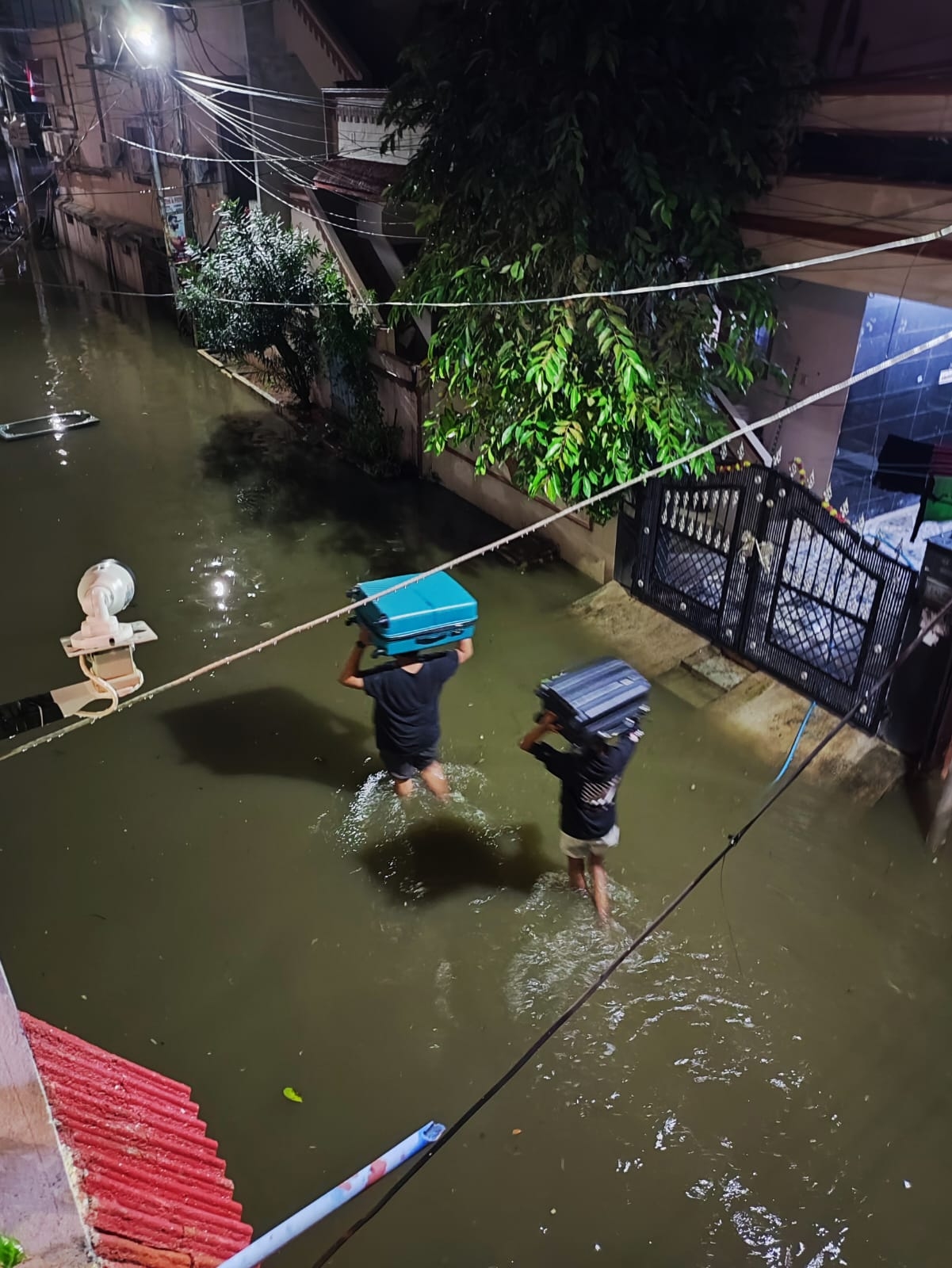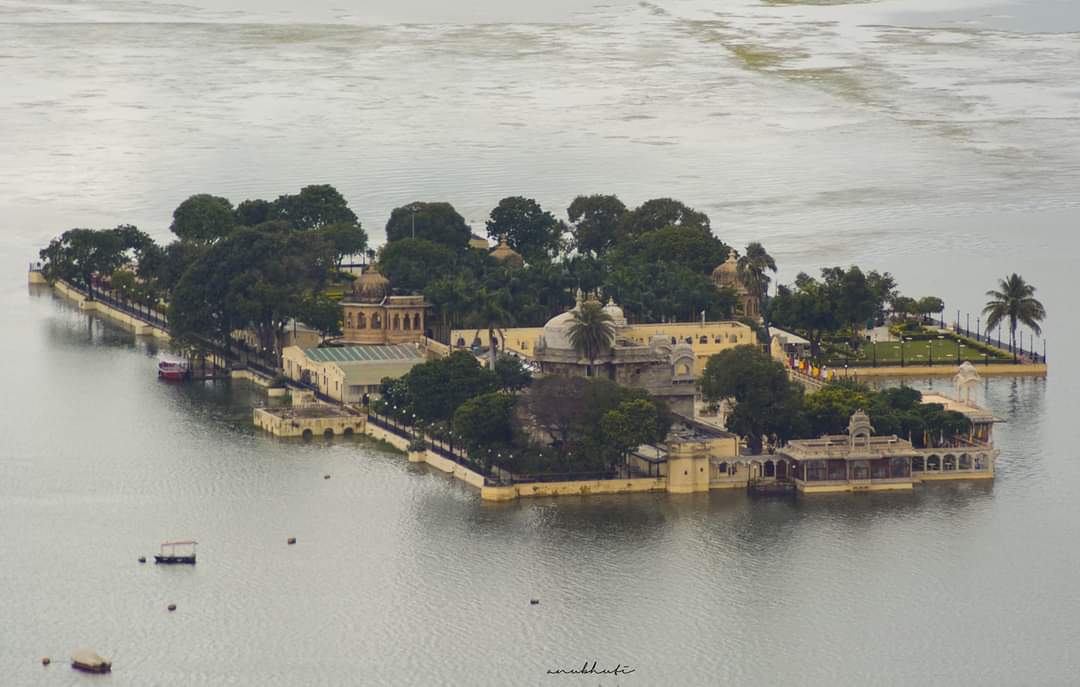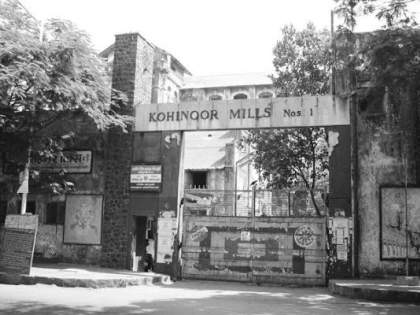In the quiet neighbourhood of Hafiz Baba Nagar, nestled within the heart of Hyderabad, the clock had just struck 2 am. An urgent announcement resonated through the loudspeakers, jolting the residents from their slumber to an unsettling message – a nearby bund breached due to relentless rains. The occupants of the homes were abruptly instructed to evacuate from the low-lying neighbourhoods. A frantic scene ensued as people scrambled to secure their belongings, unaware of the impending catastrophe.
The torrential rain continued to pour for several days in which 4000 built homes were submerged in the water. It left a trail of destruction – disrupting lives, destroying property, and dislocating livelihoods of the entire communities who were yet to recover from the COVID pandemic during. This incident transpired during the fateful month of October in the year 2020 when Hyderabad found itself at the mercy of an unrelenting deluge. It served as a reminder of a similar catastrophe when river Musi flooded the city in the year 1908 which led to modernisation through urban transformation of the Hyderabad city.
Climate Change and impact on Cities
Climate change and urbanization are two significant ongoing processes in India and their effects observable on ground through shifting weather patterns, rising temperature, urban heat island effects, intense rainfall, and urban floods. The city of Hyderabad is a major centre of social and economic growth with a high population density making it vulnerable to climate change related events. At present the drainage infrastructure is ill equipped to cope with the sudden and frequent rain transforming the cityscape into a dystopian tableau.
There is compelling evidence of climate change, but what is driving this change? It is primarily the alterations in natural Earth cycles resulting from the escalating emissions of atmospheric greenhouse gasses generated by the combustion of fossil fuels. This has given rise to a geological epoch known as the “Anthropocene,” marked by substantial human influence on ecosystems, amplifying risks, and hazards, with profound implications for essential services, infrastructure, housing, human livelihoods, the economy, and the health of urban areas.
Cities are being substantially reshaped because of catastrophic climate change. As the earth continues to warm because of human activity, increasingly devastating storms, erratic rainfall, and rising sea levels become the new normal. This results in deadly flash floods in metropolitan areas, wreaking havoc on streets, homes, and crucial infrastructure. The unending growth of cities, often at the expense of natural spaces, exacerbates the situation by restricting nature’s ability to absorb excess rainwater.
Flood of 1908 | Lessons from the past
On September 28, 1908, a devastating flood struck the river Musi. Back then, Hyderabad city encompassed an area of 26 square miles and was home to a population of 448,466 people as of the 1901 census. Tragically, this flood claimed the lives of nearly 15,000 people and obliterated over 19,000 homes, which accounted for a quarter of the city’s entire population. The city faced another grave challenge in the form of a cholera epidemic during 1911-12, resulting in 17,000 deaths. This dire situation highlighted the poor quality of living conditions and the vulnerability of the residents.
In response to this catastrophic series of events, the Nizam government, which ruled Hyderabad state at the time, embarked on a transformative plan to safeguard the city from future disasters. The eminent engineer Sir M Visvesvaraya played a pivotal role in designing a flood management system for the city. The proposed plan had three main objectives: first, to assist in the city’s reconstruction; second, to devise strategies to prevent future floods; and third, to create a drainage system for both the old city and Chaddar ghat.
The proposal included the construction of upstream storage reservoirs, effectively controlling potential future floods. Two significant reservoirs, Osman Sagar (Gandipet) and Himayat Sagar, served the dual purpose of flood control and providing clean water supply. To this day, the drainage system continues to fulfil its role in the old city, with only houses built after 1960 or encroachments being vulnerable to urban floods.

Urban Transformation and Water System
The Musi when it enters the city is overwhelmed with sewage disposal, industrial effluent waste and a massive flowing dump yard for the city. Extremely polluted and toxic making it a place for mosquitos and many hazardous diseases to breed.
The connected lakes which were once used for drinking and irrigation are either dead or slowly dying. [Jasveen Jairath] “The city had about 3000 lakes in the 1970s, but now 50 percent of them have either disappeared or are shrinking”. The dried-up water body is illegally making way for real estate ventures.
The government is more focused on planning to develop roads, and bridges and allowing the agricultural lands for private ventures which combined fully exploit the ecosystem of the city. Hyderabad has now turned into a concrete jungle with lesser open space to breathe.
The state government has taken initiatives after the 2020 floods to improve the drainage infrastructure. Strategies like SNDP, Lake Restorations and Musi Beautification has already begun. But these projects face numerous challenges and are insufficient to provide a flood proof plan for the city.

SNDP + Challenges
The Municipal Administration and Urban Development Department of the Government of Telangana has established the Strategic Nala Development Programme (SNDP) to address the challenge of flooding in Hyderabad. This program takes an innovative approach rather than relying on conventional textbook methods.
A feasibility report for the entire Hyderabad Urban agglomeration has been prepared, covering 1452 square kilometres and including 6 zones of GHMC, Cantonment Board, OU, and 26 Municipalities/Municipal Corporations around GHMC within the Outer Ring Road (ORR). The report assesses the total project cost for immediate implementation, focusing on areas with a high deficiency or non-availability of drain network, inundation points, and affected properties. The program encompasses a vast road network of 24,242 kilometres, with 260 kilometres of existing Nala (drainage channels).
Future City | Nature based Solutions
To address urban flooding in Hyderabad, a multi-faceted approach to risk preparedness and disaster management is needed. Firstly, prompt action is imperative, as indicated by BITS Pilani Hyderabad’s research, which reveals that over half of the buildings in the GHMC limits are at high flood risk. The government should create a comprehensive flood plan that includes evacuation routes and a technologically integrated neighbourhood-wide emergency alert system.
Secondly, restoring the lakes and rejuvenating the Musi River is essential. Multi-purpose spaces like parks and sports fields, capable of storing rainwater for future residential or drinking needs, should be developed alongside these efforts.
Thirdly, Hyderabad’s rapid urbanization has resulted in a lack of absorbent surfaces after heavy rainfall. The city can draw inspiration from “sponge cities” like Shenzhen, which efficiently manage rainwater through nature-based solutions such as green roofs, raingardens, and permeable pavement to significantly enhance water absorption and release capabilities.
Urbanization is intensifying, making the preservation of urban green spaces crucial. Urban planning policies should prioritize the conservation of these green areas, recognizing their significance for both people and wildlife. Rotterdam’s success story, characterized by increased green space per person and higher life expectancies, serves as a model. Incorporating nature-friendly infrastructure, such as water squares, water living, and canal transport, can mitigate flooding while enhancing the urban environment.
Lastly, there should be equitable distribution of green infrastructure that benefits all residents across the city. This approach should promote community engagement and awareness regarding climate change impacts and the importance of nature-based solutions. Implementing strategies like green roofs, floodplains, urban trees, and bioretention swales not only combats flooding but also enhances urban biodiversity and quality of life.
By adopting Nature-Based Solutions (NBS), Hyderabad can harness ecosystem services to effectively address multiple challenges. NBS enhances resilience against urban flooding and provides co-benefits to municipal budgets by supporting sustainable projects that address various urban issues simultaneously.
Conclusion
Climate change has profound global implications, with urban areas, being economic hubs with critical infrastructure and high populations, experiencing its effects in an intensified manner. The lessons drawn from past floods and subsequent urban transformation, with a focus on public health and the urban poor, provide valuable insights. In the recent past, there existed a deep connection between humans and nature, where rivers, lakes, and streams served not only as water sources and irrigation channels but also as hubs of cultural life. This relationship has evolved in contemporary times due to various economic and social factors. However, this transformation underscores the urgency of preserving these natural systems for future generations.
Addressing drainage infrastructure concerns in the city involves more than just widening drainage and enhancing lake aesthetics. While these efforts are important, they become significantly more efficient and effective when integrated with nature-based solutions to mitigate their impacts. Innovations in urban design, sustainable infrastructure, and resilient green solutions will lead to the creation of cities that not only withstand but flourish in the face of the severe consequences of climate change.
Ultimately, the objective is to transform the city into a futuristic, sustainability-focused, and climate-resilient utopia where diverse individuals can coexist harmoniously.
Citations
Cohen, B. (2011) ‘Modernising the Urban Environment: The Musi River Flood of 1908 in Hyderabad, India’, Environment and History, 17(3), pp. 409–432. doi:10.3197/096734011×13077054787181.
Creasy, A. and Clay, O. (2022) How can cities use nature-based solutions to tackle urban flooding?, WSP. Available at: https://www.wsp.com/en-gb/insights/how-can-cities-use-nature-based-solutions-to-tackle-urban-flooding (Accessed: September 2023).
DEEPAK, P. (2023) Half of Hyderabad Buildings Face Flood Risk: Study, Deccan Chronicle. Available at: https://www.deccanchronicle.com/nation/current-affairs/200723/half-of-hyderabad-buildings-face-flood-risk-study.html (Accessed: September 2023).
ICLEI (2017) Nature-based solutions for Sustainable Urban Development, ICLEI Briefing Sheet – Nature-based Solutions . Available at: https://www.thegpsc.org/sites/gpsc/files/iclei_nature_based_solutions_eng_0.pdf (Accessed: September 2023).
Jairath, J. (2017) Hyderabad: Most Lakes are either dead or dying: Hyderabad News – Times of India, The Times of India. Available at: https://timesofindia.indiatimes.com/city/hyderabad/hyderabad-most-lakes-are-either-dead-or-dying/articleshow/58987342.cms (Accessed: September 2023).
Mungara, S. (2021) GHMC Nala status report gathering dust: Hyderabad News – Times of India, The Times of India. Available at: https://timesofindia.indiatimes.com/city/hyderabad/ghmc-nala-status-report-gathering-dust/articleshow/81262639.cms (Accessed: September 2023).






